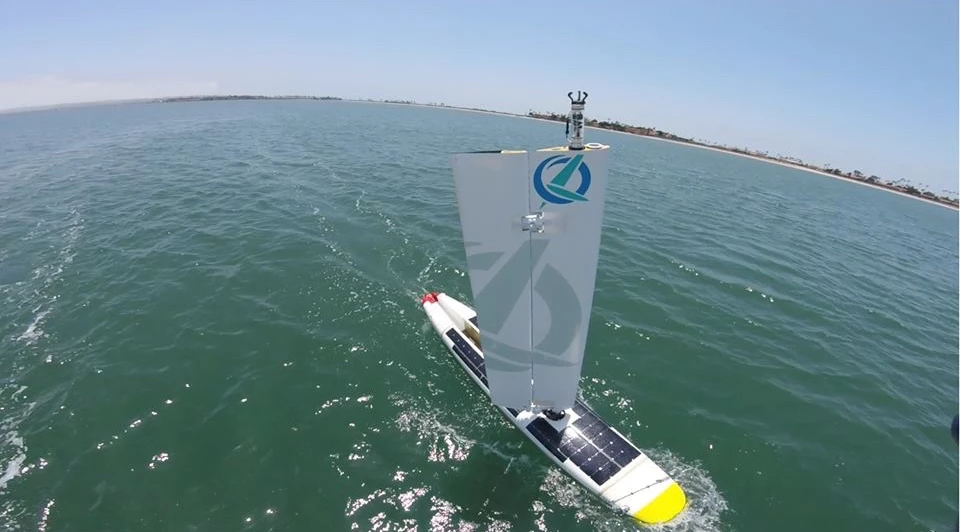In a three-day US Naval exercise that took place last month in Rhode Island's Narragansett Bay, Lockheed Martin achieved a world-first. It used an unmanned submersible to launch an unmanned aerial vehicle (UAV), while an unmanned surface vehicle provided surface reconnaissance and surveillance.
The exercise began with Ocean Aero's Submaran surface vehicle relaying instructions from a ground control station to Lockheed Martin's Marlin MK2 autonomous underwater vehicle, via underwater acoustic communications.

Acting on those instructions, the Marlin in turn released a canister containing the company's fixed-wing Vector Hawk UAV, with its wings folded back. Upon reaching the surface, that canister opened and the UAV unfolded its wings and took off, proceeding to follow a predetermined flight path.
Propelled by either an electric thruster or a retractable wingsail, the 4.14-meter (13.6-ft) Submaran (seen below) is equipped with solar panels that allow it to remain operational for months at a time. It can be outfitted with a variety of sensors for different applications, and is even capable of submerging beneath the surface.

The 10-ft (3-m) battery-powered Marlin can descend to up to 1,000 ft (305 m), cruising for up to 24 hours and managing a maximum payload of 250 lb (113 kg). The Vector Hawk, meanwhile, can remain airborne for over 70 minutes on one charge of its battery pack, and has a line-of-sight range of up to 15 km (9 miles).
Sources: Lockheed Martin, Ocean Aero




